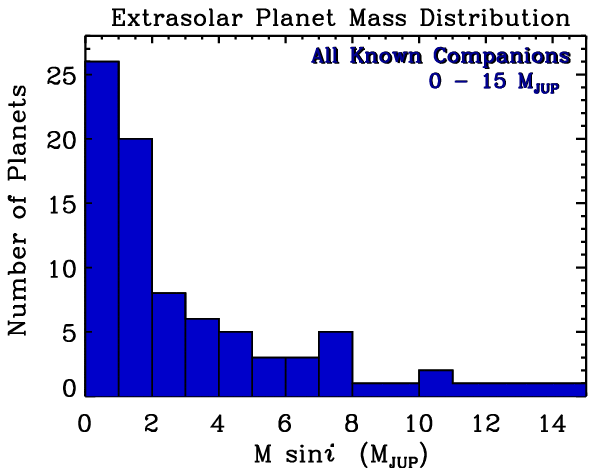Discovering Planets around other Stars
Fundamental to our search for extra-terrestrial life is the issue of whether planets like Earth could form elsewhere. We do not currently have the technology to detect Earth-like planets. However, we have detected very massive, Jupiter-size planets. Most believe it is just a matter of time before Earth-like planets will also be found.
The first planet, found orbiting 51 Peg
In October 1995 Michel Mayor and Didier Queloz of Geneva Observatory
in Switzerland reported finding the first planet. Observing the star
51 Pegasi in the constellation Pegasus, they noticed a telltale wobble,
a cyclical shifting of its light toward the blue and red ends of the
spectrum. The timing of this Doppler shift suggests that the star
wobbles because of a closely orbiting planet.
This has opened a flood gate..
Since that time, astronomers from all over the world (U.S., Australia, Switzerland, etc) have discovered planets around >100 stars! A current list, updated every few weeks with new discoveries, can be found HERE.
What kind of planets are being found?
MASSIVE planets only.. Most planet masses are
quoted in terms of Jupiter masses, MJUP, which
is 318x Earth, but also 1/1000 the mass of the Sun.
Why are only massive planets found?
They create the greatest `wobble'
in the star. We can not directly see the planet! Instead, we must depend on watching for the
Star `hosting' the planet to make a cyclic wobble motion due to the gravitational
tug of the planet.
Other odd findings
Stars with high metal abundances are most likely to harbor planets. See here.
